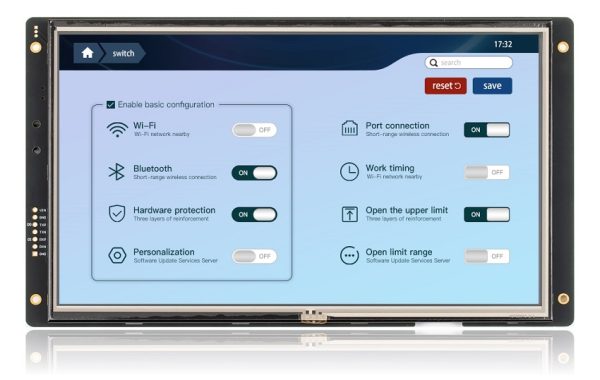Introduction to Medical Equipment TFT Screens
In the healthcare industry, TFT (Thin Film Transistor) screens have emerged as essential components in medical equipment, revolutionizing patient care, diagnostics, and medical imaging. This article explores the diverse applications and benefits of TFT screens in medical settings, highlighting their impact on healthcare delivery, efficiency, and patient outcomes.

Enhancing Patient Monitoring and Diagnostic Tools
1. Advanced Patient Monitoring Systems
TFT screens in patient monitors provide healthcare professionals with real-time vital signs, electrocardiograms (ECGs), and respiratory data. High-definition TFT displays ensure clear visualization of patient health metrics, facilitating early detection of abnormalities and timely intervention.
2. Diagnostic Imaging Equipment
Medical imaging devices such as ultrasound machines, MRI scanners, and CT scanners utilize TFT screens to display detailed anatomical images and diagnostic results. TFT technology enhances image clarity and contrast, aiding radiologists and clinicians in accurate disease diagnosis and treatment planning.
Improving Healthcare Workflow and Efficiency
1. Electronic Health Records (EHR) Systems
Integrated TFT screens in EHR systems allow clinicians to access patient records, medical histories, and treatment plans efficiently. Touchscreen interfaces streamline data input and retrieval, reducing administrative burden and enhancing clinical decision-making.
2. Surgical Navigation and Robotics
In surgical environments, TFT screens are integrated into navigation systems and robotic surgical platforms. Surgeons benefit from high-resolution displays that provide precise anatomical visualization and real-time procedural guidance, improving surgical accuracy and patient safety.
Facilitating Telemedicine and Remote Patient Monitoring
1. Telemedicine Consultations
TFT screens enable high-definition video conferencing and teleconsultations between healthcare providers and patients in remote locations. Clear audiovisual communication enhances the delivery of virtual healthcare services, expanding access to specialized medical expertise.
2. Wearable Health Devices
Wearable medical devices equipped with TFT screens, such as smartwatches and health monitors, enable continuous monitoring of vital signs and activity levels. TFT displays provide users with real-time health data and alerts, promoting proactive health management and early intervention.
Enhancing Patient Engagement and Education
1. Patient Education Tools
TFT screens in patient education tools deliver interactive multimedia content, educational videos, and personalized health information. Patients can access resources related to their conditions, treatment options, and self-care instructions, empowering them to actively participate in their healthcare journey.
2. In-Room Entertainment and Communication
Hospitals integrate TFT screens into bedside terminals and entertainment systems, allowing patients to access entertainment options, communication services, and hospital information. User-friendly interfaces enhance patient comfort and satisfaction during hospital stays.
Ensuring Regulatory Compliance and Safety Standards
1. Compliance with Medical Device Regulations
Manufacturers of TFT screen for medical equipment adhere to stringent regulatory standards such as FDA (Food and Drug Administration) approvals and CE (Conformité Européenne) certifications. Compliance ensures product safety, performance reliability, and compatibility with healthcare environments.
2. Radiation Shielding and Hygiene Protocols
TFT screens in medical equipment are designed with radiation shielding materials and antimicrobial coatings to mitigate infection risks and maintain hygienic standards in clinical settings. Robust construction and durability support frequent disinfection practices without compromising display functionality.
Future Innovations and Technological Advancements
1. Integration with Artificial Intelligence (AI)
Future TFT screens may incorporate AI algorithms for real-time data analysis, predictive analytics, and decision support in medical diagnostics and treatment planning. AI-enhanced displays could optimize clinical workflows and personalize patient care strategies.
2. Augmented Reality (AR) in Surgical Applications
AR-enabled TFT screen could revolutionize surgical visualization by overlaying patient anatomy, procedural steps, and real-time data onto surgeons’ field of view. AR integration enhances surgical precision, training capabilities, and patient outcomes in complex procedures.
Conclusion
TFT screens have become indispensable in modern medical equipment, facilitating advanced diagnostics, patient monitoring, telemedicine, and surgical navigation. As technology continues to evolve, TFT displays will play a pivotal role in enhancing healthcare delivery, improving clinical outcomes, and transforming patient care experiences worldwide. By harnessing the versatility and reliability of TFT technology, healthcare providers and medical device manufacturers are poised to innovate and meet the evolving demands of the healthcare industry effectively.